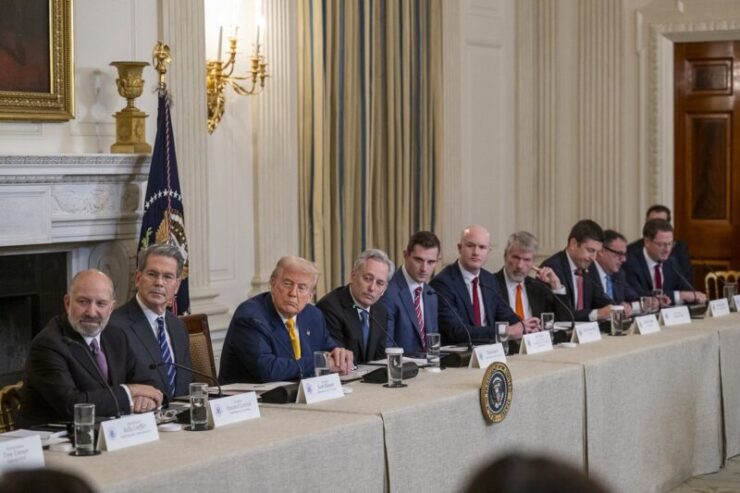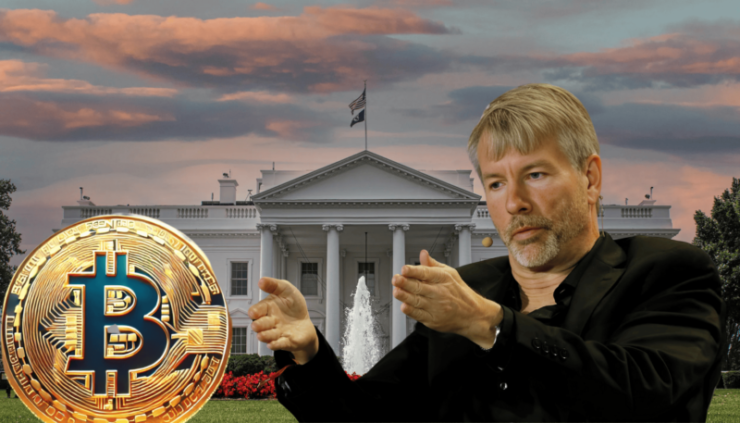At the White House Digital Assets Summit, Michael Saylor, co-founder of Strategy (formerly MicroStrategy), laid out a bold plan for the United States to unlock up to $100 trillion in economic value over the next decade through a structured and clear approach to cryptocurrency regulation.
He argued that by eliminating regulatory hurdles, embracing digital asset innovation, and strategically acquiring Bitcoin, the U.S. could solidify its position as the global leader in the digital economy.
Saylor proposed a classification system that categorizes digital assets into four key groups: digital tokens for capital formation and innovation, digital securities to enhance market efficiency, digital currencies to reinforce the dollar’s dominance in global trade, and digital commodities, primarily Bitcoin, for long-term wealth preservation.
By implementing this taxonomy, he suggested, the U.S. could eliminate uncertainty in crypto regulation and seamlessly integrate blockchain technology into traditional financial systems.
A major component of his proposal is the removal of restrictions on cryptocurrency, allowing businesses and institutions to access capital markets more efficiently while ensuring the U.S. dollar remains central to global commerce.
According to Saylor, this approach would not only encourage innovation within the country but also prevent capital flight, attracting more investment into the U.S. digital economy.
Strategic Bitcoin Reserve Proposal
A key aspect of Saylor’s proposal is ensuring that banks have the regulatory support to custody, trade, and finance Bitcoin assets. He argued that the ongoing debanking of crypto-related businesses must be stopped as it stifles innovation and forces capital offshore. Instead, he called for major financial institutions to be encouraged to participate in the digital asset economy, helping to bridge the gap between traditional finance and the crypto sector.
“For the industry to reach its full potential, it needs to be recognized as legitimate and treated fairly by the traditional banking, insurance, and financial establishment, as well as government agencies.” he outlined
At the heart of his vision is the creation of a U.S. Strategic Bitcoin Reserve, which would see the government gradually acquire between 5% and 25% of the total Bitcoin supply by 2035 through structured purchases.
Drawing from his firm’s own Bitcoin accumulation strategy, Saylor projected that by 2045, such a reserve could generate between $16 trillion and $81 trillion, potentially providing a long-term mechanism to ease the national debt and strengthen economic resilience.
With Strategy (formerly MicroStrategy) having already amassed nearly 500,000 BTC since 2020, Saylor’s proposal reinforces his belief that Bitcoin is the most valuable digital commodity of the future—and that the U.S. must act swiftly to secure its stake in the asset before other nations take the lead.

Industry Leaders and Government Initiatives
The first-ever White House Crypto Summit, held on Friday, marked a pivotal moment in the Trump administration’s evolving stance on digital assets, positioning itself as far more industry-friendly than its predecessor.
The event brought together an elite group of crypto industry leaders, including Coinbase CEO Brian Armstrong, Kraken co-CEO Arjun Sethi, and prominent lawmakers such as House Majority Whip Tom Emmer (R-Minn.).
The event also featured federal officials such as Commerce Secretary Howard Lutnick, Treasury Secretary Scott Bessent, and SEC Commissioner Hester Peirce among others.
Unlike the previous administration’s regulatory crackdowns, the summit set a clear tone of collaboration, with discussions focusing on regulatory clarity, financial innovation, and the strategic role of digital assets in the U.S. economy. The meeting also highlighted President Trump’s recently announced executive order to establish a U.S. Strategic Bitcoin Reserve, consolidating Bitcoin assets seized through legal forfeitures into a government-held treasury.
Quick Facts:
- Michael Saylor proposed that clear regulatory frameworks for digital assets could unlock up to $100 trillion in economic value over the next decade.
- He categorized digital assets into four classes: Digital Tokens, Digital Securities, Digital Currencies, and Digital Commodities, with Bitcoin falling under the Digital Commodities category.
- Saylor suggested that by acquiring 5% to 25% of the total Bitcoin supply by 2035, the U.S. could generate between $16 trillion to $81 trillion by 2045.





